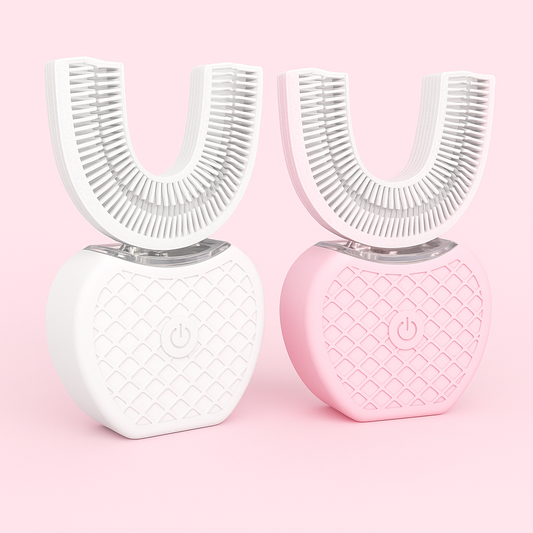Introduction
Fresh breath in dogs goes beyond simple pet owner comfort — it’s a vital indicator of your furry friend’s overall health. In 2025, the focus on natural, safe, and effective methods to combat bad breath in dogs has never been stronger. Halitosis, or bad breath, is often a symptom of underlying dental disease, gastrointestinal issues, or other systemic problems that require attention. Fortunately, with the right knowledge and consistent care, you can improve your dog’s breath naturally and support their long-term wellbeing.
This comprehensive article will explore a variety of proven strategies to help pet owners like you maintain your dog’s oral health in an effective, holistic way. From veterinary procedures to dietary changes and natural remedies, we’ll dive deep into everything you need to know to ensure your dog’s breath stays fresh in 2025 and beyond.
1. Prioritize Regular Veterinary Dental Check-Ups
Regular professional dental care is the cornerstone of maintaining your dog’s oral health. Veterinarians can identify early signs of periodontal disease, gingivitis, and other oral health issues that contribute to bad breath.
- Why professional cleanings matter: Unlike home care, professional cleanings remove hardened tartar and plaque below the gumline, preventing bacteria proliferation.
- Frequency recommendations: Most vets suggest dental check-ups at least once a year, but dogs prone to dental issues might benefit from more frequent visits.
- Signs your dog needs a vet check: Persistent bad breath, difficulty eating, excessive drooling, or bleeding gums.
Ignoring dental health can lead to painful infections, tooth loss, and systemic health problems affecting the heart, kidneys, and liver. Therefore, veterinary care is not just about fresh breath, but about safeguarding your dog’s quality of life.
2. Establish and Maintain a Consistent Teeth Brushing Routine
Daily brushing remains the most effective at-home method to reduce plaque and prevent bad breath. While it may take patience and training, the rewards are immense for your dog’s oral health.
- Choosing the right tools: Use dog-specific toothbrushes and toothpaste. Human toothpaste contains ingredients harmful to dogs.
- Step-by-step introduction: Let your dog taste the toothpaste first, then gently rub their gums with your finger before progressing to brushing teeth.
- Brushing frequency: Aim for daily brushing, but a minimum of 2-3 times per week can significantly improve breath and dental health.
- Techniques: Focus on the gum line and molars where plaque tends to accumulate. Be gentle and patient to build your dog’s comfort.
Consistency is key. Over time, brushing reduces bacterial buildup and freshens breath, while also preventing more serious dental conditions.
3. Utilize High-Quality Dental Chews and Treats
Dental chews serve dual purposes—they satisfy your dog’s natural urge to chew and mechanically reduce plaque and tartar buildup.
- What to look for: Veterinary Oral Health Council (VOHC) seal of approval ensures safety and effectiveness.
- Types of chews: Rawhide, dental sticks, enzymatic chews, and specially formulated dental bones.
- Benefits: Chewing stimulates saliva production, which naturally cleanses the mouth and reduces bacterial growth.
- Moderation: Follow recommended serving sizes to avoid digestive upset or calorie overload.
Incorporating dental chews into your dog’s daily routine complements brushing and helps maintain fresher breath naturally.
4. Add Water Additives to Your Dog’s Routine
Water additives are an innovative, hassle-free way to support oral hygiene without the need for brushing.
- How they work: These additives contain natural antibacterial agents that reduce oral bacteria and plaque formation.
- Choosing the right product: Look for additives free from harmful chemicals and artificial flavors, preferably with natural ingredients like chlorhexidine or enzymes.
- Usage tips: Add as directed to your dog’s fresh drinking water daily for best results.
Water additives can be particularly useful for dogs resistant to brushing or as a supplementary oral care measure.
5. Incorporate Crunchy Fruits and Vegetables Into Your Dog’s Diet
Certain fruits and vegetables act as natural toothbrushes by scraping plaque off teeth while your dog chews.
- Safe options: Carrots, apple slices (without seeds), celery sticks, and cucumber slices.
- Nutritional benefits: These foods provide vitamins, fiber, and hydration in addition to oral health benefits.
- Preparation: Always wash produce thoroughly and cut into appropriate sizes to avoid choking hazards.
- Introduce gradually: Monitor your dog for any allergies or digestive sensitivities when introducing new foods.
These crunchy snacks help maintain dental health naturally, contributing to fresher breath without additives.
6. Support Digestive Health with Probiotics
Bad breath can sometimes originate from digestive imbalances. Introducing probiotics helps maintain a healthy gut microbiome, which in turn reduces unpleasant odors caused by gastrointestinal issues.
- Consult your veterinarian: Always check before adding supplements to your dog’s diet.
- Quality matters: Use probiotics formulated for dogs with appropriate strains like Lactobacillus and Bifidobacterium.
- Consistency and patience: Probiotics usually show benefits after several weeks of regular use.
Improving digestive health supports overall wellbeing and helps keep your dog’s breath fresh from the inside out.
7. DIY Homemade Dental Solutions
For pet owners who prefer natural, homemade options, there are safe recipes to help maintain oral hygiene.
- Coconut oil rinse: Dilute coconut oil with water (1:1 ratio) and gently swab your dog’s teeth and gums; coconut oil has natural antibacterial properties.
- Baking soda paste: Mix a small amount of baking soda with water to form a paste; use sparingly and not as a toothpaste substitute without vet approval.
- Parsley chew treats: Fresh parsley can be chopped finely and added to meals or frozen in treats to help neutralize odors.
Always research ingredient safety and consult your veterinarian before trying homemade remedies to avoid toxic substances.
8. Maintain Overall Health for Better Breath
Fresh breath is often a reflection of general health. Ensuring your dog receives a balanced diet, regular exercise, and routine health checks can prevent conditions that cause bad breath.
- Balanced diet: Feeding high-quality dog food with necessary nutrients supports oral and systemic health.
- Hydration: Adequate water intake helps flush bacteria from the mouth and supports kidney function.
- Regular exercise: Promotes healthy digestion and immune function.
- Monitor for illnesses: Conditions like diabetes, kidney disease, and oral tumors can cause halitosis and require prompt veterinary care.
Conclusion
Improving your dog’s breath naturally in 2025 is achievable with a multifaceted approach that includes professional veterinary care, consistent oral hygiene routines, dietary adjustments, and natural supplements. By combining these strategies, you can significantly reduce bad breath, prevent dental disease, and enhance your dog’s overall health.
Remember, fresh breath is more than a cosmetic benefit — it’s a window into your dog’s wellbeing. Prioritize their oral care with patience and consistency, and enjoy the close, affectionate moments with your furry friend without unpleasant odors.
Start implementing these effective strategies today to ensure your dog enjoys fresh breath and a happy, healthy life for many years to come.


